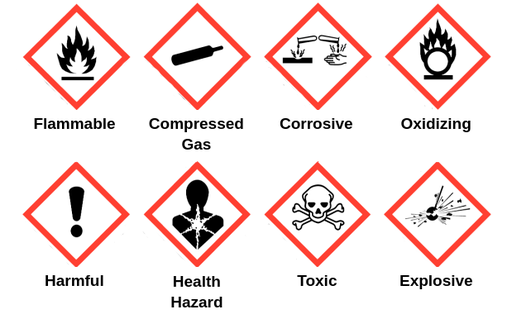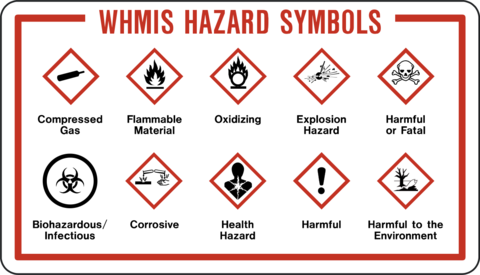chem study sheet
5.0(4)
5.0(4)
Card Sorting
1/73
Earn XP
Description and Tags
Study Analytics
Name | Mastery | Learn | Test | Matching | Spaced |
|---|
No study sessions yet.
74 Terms
1
New cards
liquid to solid
freezing
2
New cards
solid to liquid
melting
3
New cards
solid to gas
sublimation
4
New cards
gas to solid
deposition
5
New cards
gas to liquid
condensation
6
New cards
liquid to gas
evaporation
7
New cards
physichal **properties**
how it looks physically: Shape, Colour, temperature, change in state of matter
8
New cards
chemical **properties**
Characteristics of a substance that determine how it will react with other substances. How it's made up chemically
9
New cards
physical change
nothing new is created and only the appearance changes. Can be reversed. eg:ice cream melting, boiling water
10
New cards
chemical change
a different substance is formed. not reversible. Gas, shape, colour, smell, temperature eg:burning wood, food rotting
11
New cards
element
A substance that cannot be broken down into simpler substances
12
New cards
compound
a thing that is composed of two or more separate elements; a mixture.
13
New cards
mixtures
A combination of two or more substances that are not chemically combined
14
New cards
mechanical mixture
you can see the different substances that make up the mixture called heterogeneous. eg. trail mix, salad
15
New cards
solution
you cannot see the different substances that make up the mixture. called homogeneous eg. juice powder in water
16
New cards
Suspention
a cloudy mixture where tiny particles are held within another eg:orange juice with pulp
17
New cards
colloid
cloudy mixture where the tiny suspended particles cannot be separated eg.milk
18
New cards
calculating neutrons
atomic mass - atomic number
19
New cards
atom
particle of matter that makes up everything and is so tiny that we cannot see it.
20
New cards
electron
negatively charged particle
21
New cards
proton
positively charged particle
22
New cards
neutron
A small particle in the nucleus of the atom, with no electrical charge
23
New cards
nucleus
Center of an atom
24
New cards
atomic mass
quantity of matter in an atom. found under the symbol
25
New cards
atomic number
the number of protons in the nucleus of an atom
26
New cards
period
horizontal row in the periodic table
27
New cards
group
Vertical column in the periodic table. similiar elements are in a group
28
New cards
metals
solid, shiny, good conductors of heat and electricity, very malleable(strong) and ductile(be stretched into a wire).
29
New cards
non-metals
some solid, some gas, not very shiny, poor conductors, brittle and not ductile.
30
New cards
metalloids
have qualities of metals and non-metals. They are solid, dull or shiny, sometimes conduct electricity but not heat, brittle and not ductile.
31
New cards
alkali metals
most reactive metals: in group 1
32
New cards
alkaline earth metals
second most reactive: in group 2
33
New cards
halogens
most reactive nonmetals: group 17
34
New cards
noble gases
stable and non-reactive gasses: in group 18
35
New cards
saftey hazard symbols
hazard symbols not used for the workplace
36
New cards
WHMIS
Workplace Hazardous Materials Information System
37
New cards
Yellow triangle
caution
38
New cards
orange diamond
warning
39
New cards
red diamond
danger
40
New cards
saftey hazard symbols
flammable, compressed gas, corrosive, oxidizing, harmful, health hazard, toxic, explosive

41
New cards
WHMIS symbols
compressed gas, flammable material, oxziding, explosion, harmful, biohazardous, corrosive, health hazard, harmful, harmful to enviroment

42
New cards
Ionic compounds
metal + non-metal
43
New cards
where are metals located on the periodic table?
everywhere on the left side of the staircase
44
New cards
where are non-metals?
on the right side of the staircase minus the metalloids
45
New cards
molecular compounds
non-metal + non metal
46
New cards
what does (s), (l), (g), (aq) mean?
(s)=solid (l)=liquid (g)=gas (aq)=aqueous/anything dissolved in water
47
New cards
how many atoms are in H2O?
H2O: H=2 O=1, Atoms=3
48
New cards
iconic compounds are what at room temp?
solid
49
New cards
do ionic compounds conduct electricity?
yes
50
New cards
how do you name ionic compounds?
balance them out by making a chart or switching the charges when it’s over 1
51
New cards
Calcium= 2+ and Nitrogen= 3- what’s the compound name?
Ca3N2
52
New cards
Sodium= 1+ Phosphorus= 3- what’s the compound name?
Na3P
53
New cards
Platinum= 4+ oxygen= 2- what’s the compound name?
PtO2 because of lowest terms
54
New cards
What does it mean when an element has a roman numeral?
It means that the element has more than one charge and the roman numeral depicts which one it has eg. Cu2+ = Cu(ll) or Cu+ = Cu(l)
55
New cards
molecular compounds are what at room temp?
either a solid, liquid, or gas
56
New cards
how do you write the names of molecular compounds?
by using prefixes eg. CO2 Carbon **Di**oxide= Carbon:1- and oxygen:2-
57
New cards
what are the molecular prefixes up to 6?
1:mono
2:di
3:tri
4:tetra
5:penta
6:hexa
2:di
3:tri
4:tetra
5:penta
6:hexa
58
New cards
reactants
the materials at the beginning of a chemical reaction
59
New cards
product
the new created substance at the end of a reaction
60
New cards
Evidence of a chemical change (gpcsh)
gas, precipitate, colour, shape, heat
61
New cards
exothermic
release heat or energy (hot) eg. making an ice cube, burning wood
62
New cards
endothermic
absorbs heat or energy (cold) eg. boiling water, formation of frost
63
New cards
combustion
a substance reacts with oxygen and produces CO2 and H2O
64
New cards
corrosion
reacts with oxygen to slowly create rust
65
New cards
law of conservation of mass
matter is not created or destroyed
66
New cards
how do you calculate how much product or reactant is missing using the law of conservation?
the products should equal the the reactant and the reactants should equal the product when you add them
67
New cards
open system
products and reactants can escape
68
New cards
closed system
products and reactants can’t escape
69
New cards
catalysts
increase the speed of a chemical reaction
70
New cards
concentration
more ____ make bigger and faster reactions
71
New cards
temperature
hotter= faster reactions
colder=slower reactions
colder=slower reactions
72
New cards
surface area
higher=faster reactions
lower=slower reactions
lower=slower reactions
73
New cards
qualitative
qualities of an element
74
New cards
quantitative
the number parts of an element